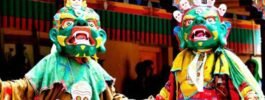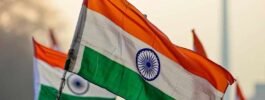Holi, also known as the Festival of Colors, is one of the most vibrant and joyous festivals celebrated in India. It marks the arrival of spring and the victory of good over evil. While the essence of Holi remains the same throughout the country, the way it is celebrated varies across different regions, showcasing the rich cultural diversity of India.
Lathmar Holi in Uttar Pradesh
In the northern state of Uttar Pradesh, especially in the towns of Mathura and Vrindavan, Holi takes on a unique form known as Lathmar Holi. The tradition involves women playfully hitting men with sticks while the men try to shield themselves. Legend has it that Lord Krishna, a native of the region, used to playfully tease the women of his village, and in retaliation, they would chase him away with sticks. This playful reenactment of Krishna’s antics has become a popular tradition in this part of the country.
People gather in the streets, sing traditional Holi songs, and indulge in the colorful festivities. The air is filled with laughter, music, and the vibrant hues of powdered colors, creating a lively and energetic atmosphere that is unique to Lathmar Holi.
Shigmo in Goa
In the coastal state of Goa, Holi is celebrated as Shigmo, a parade filled with music, dance, and elaborate floats depicting scenes from Hindu mythology. The festivities last for several days and are a blend of Holi celebrations and Goa’s traditional folk culture. People dress in colorful costumes, perform traditional folk dances like the Ghode Modni and Fugdi, and sing traditional songs known as Zoti. Shigmo is a grand and colorful affair that showcases the unique cultural heritage of Goa.
Phaguwa in Bihar
In the eastern state of Bihar, Holi is known as Phaguwa and is celebrated with great enthusiasm and fervor. One of the highlights of Phaguwa in Bihar is the tradition of building and lighting a bonfire known as Holika Dahan. People gather around the fire, sing prayers, and perform rituals to ward off evil spirits. The next day, the streets come alive with people throwing colored powders and water at each other, dancing to traditional Bhojpuri music, and indulging in festive treats like gujiya and thandai.
Cultural Variations Across India
While the essence of Holi remains consistent across India, each region adds its own unique touch to the festivities. In Punjab, Holi is celebrated as Hola Mohalla, where Sikhs demonstrate their martial arts skills and engage in mock battles. In Maharashtra, Holi is celebrated as Rang Panchami, five days after the main Holi festival. In the southern state of Tamil Nadu, Holi is celebrated as Panguni Uthiram, a festival that combines Holi with the celestial wedding of the deities.
The diversity of Holi celebrations across India reflects the country’s rich cultural tapestry and the spirit of unity in diversity. Whether it is the playful Lathmar Holi in Uttar Pradesh, the colorful Shigmo in Goa, or the vibrant Phaguwa in Bihar, Holi brings people together in a spirit of joy, harmony, and celebration.
Holi is not just a festival of colors; it is a celebration of life, love, and togetherness. The varied ways in which Holi is celebrated across different parts of India highlight the country’s cultural richness and the spirit of unity that binds its people together. As the colors of Holi spread joy and happiness, they also symbolize the colorful diversity and unity of India.







